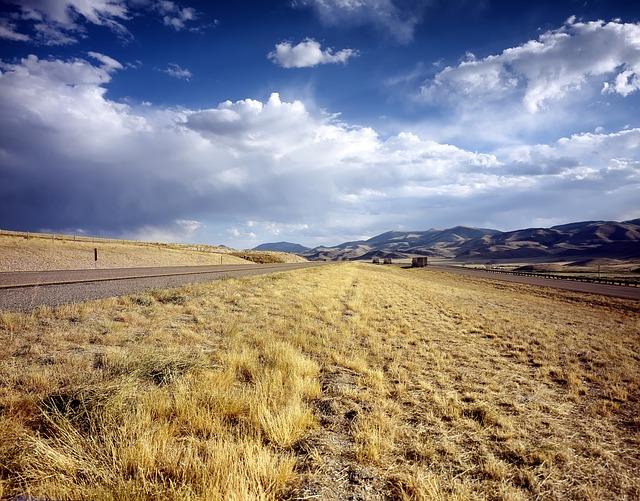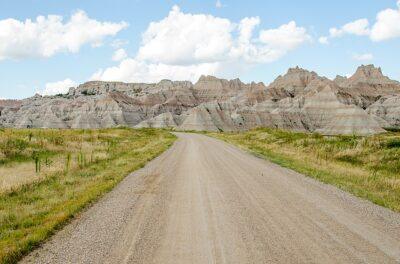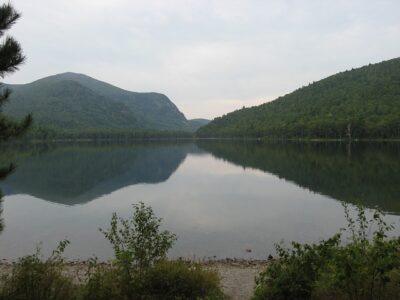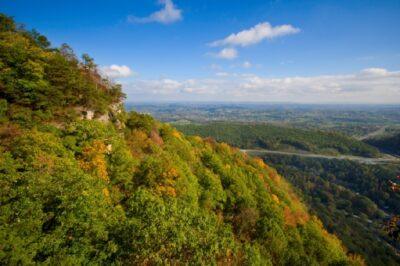Many people wonder where the safest place to retreat is should a major disaster hit, an economic collapse occur, or the power grid go down for an extended period of time.
In truth, there is no singular “safe place” where you are guaranteed to survive no matter what, but there are certain factors that make some regions safer than others.
In general, the bet regions to survive in the United States should meet as many of the following criteria as possible:
- Low population density (arguably the most important factor)
- Away from the coastlines
- Little risk of natural disaster (tornadoes, hurricanes, etc.)
- Plenty of fresh, running water
- An abundance of wild game and edible plants that you can hunt or forage
- Fertile land for growing crops
- Long growing seasons
- A current strong local or statewide economy
- The ability to re-build an economy after a disaster (examples: farmer’s markets, mines, logging, oil sites, etc.)
- Protected gun rights
- A low crime rate
- Lower cost of living/housing
- Low property taxes
- Away from nuclear/chemical power plants and military bases
- Away from major cities that could be potential enemy targets
We’ve attempted to include regions throughout the US on our list. Let’s get started:
1. Idaho panhandle/western Montana
We’ll start out with what we feel might be the safest region in the entire United States: the Idaho panhandle/western Montana. The majestic mountains of northern Idaho and western Montana are rich in wildlife, edible plants, rivers and lakes. If you ever needed to find a retreat location in the wilderness, it’s perfectly possible to sustain yourself on natural resources here.
Mini-Water Filter Fits In Your Pocket And Removes 100 Percent Of Water-Borne Bacteria!
The population density is thin, gun rights are strongly protected, and taxes are low due to strong conservative/libertarian politics. And, the ground is perfectly fertile for you to grow a field of your own crops and/or livestock if necessary. In comparison to other states and regions, the crime rate is also low and in the event of a long-term disaster, the economy could rebuild due to a thriving logging industry, silver mines in the mountains, and a great quantity of successful farmer’s markets.
The area may be a little too close to the West Coast than some may like, and northern Idaho in particular is close to the large Washington city of Spokane, which some feel could be a potential terrorist/nuclear target. But all in all, the Idaho panhandle/western Montana region meets almost all of our criteria, and at the very least it’s our highest recommended retreat area in the Northwest region.
2. Western Dakotas
Both North and South Dakota apply here, but we recommend the western halves of both states rather than the eastern sides (we’ll get to why in a bit).
In general, this area offers a lot of benefits for outlasting the apocalypse. Most notably, it’s as far as possible as you can get from both coastlines, which many disaster experts feel are dangerous hotspots due to their thick population densities, risks of hurricanes, and major cities that could be nuclear targets.
It also offers excellent fertile land for growing crops (though admittedly, some areas have shorter growing seasons), and boasts sparse populations and strong Second Amendment rights. But there is still one negative factor that makes this general area a slight concern, and you’ve probably guessed it: tornados. Fortunately, the Dakotas, especially North Dakota, are at the lowest risk for tornadoes in the Midwest. (Oklahoma, for your information, is the worst).
But a slightly lesser risk of tornadoes isn’t the only reason why the western Dakotas are the most recommended area in the Midwest to outlast a disaster. Home/real estate prices in both states are extremely low, and North Dakota has actually de-populated in recent years. In order to encourage resettlement, some lots in North Dakota are even nearly free! In addition, there’s very low crime and low car insurance rates in both states, and the oil fields of North Dakota offer an attractive opportunity for rebuilding an economy in the aftermath of an apocalyptic-type scenario.
Restore Your Old Blades To A Razor’s Edge In Just Seconds!
One big negative to living in the Dakotas is that the winters here are brutal, and we don’t mean that lightly. But if you dress warmly and prepare your home and family well for it, you can get through it.
All in all, the Midwest is definitely a region to consider for outlasting a disaster, and the western Dakotas are arguably the best retreat area in the region to accomplish that.
3. Northern Arizona
Many people say that there is not one Arizona but two: northern and southern. Southern Arizona is noted for its vast and arid desert that is among the hottest and driest locations in the US. Water is a huge concern in any disaster situation, and it’s simply difficult to find enough of it in southern Arizona (or any desert region in the US for that matter). And as gun friendly as the state of Arizona is, many disaster experts do not recommend that you live so close to the unstable border even if you do decide you can tough out the desert.
Fortunately, it’s a completely different story in the northern part of Arizona that is marked by sprawling pine forests and tall mountains that sometimes look like they should belong in the Northwest. The temperatures here are much more moderate and forgiving than in the southern half, the population is much less dense (there’s no Phoenix in the northern half), and there are plenty of good ranch and farming sites for you to raise your own livestock and crops in addition to suitable retreat areas.
When it comes to negatives, certain towns and cities in northern Arizona are expensive to live in. But keep in mind we’re trying to choose regions throughout the US. If you live in or near the Southwest, northern Arizona is the safest bet.
4. Northern New Hampshire/western Maine
There are, unfortunately, fewer safe place in the eastern US than in the west. But, thankfully, there still some retreat areas to consider. Northern New Hampshire and western Maine are to the northeastern US what the Idaho panhandle and western Montana are to the west. Yes, the East Coast in general is a hotspot for nuclear threats and natural disasters. But northern New Hampshire and western Maine are safer.
This area is very rich in natural resources, sprawls of wilderness and wildlife. There are already strong hunting and fishing communities here, so you can self-sustain yourself on food if necessary. The population density is slightly thicker in New Hampshire, but it thins out in Maine. In fact, the population density of western Maine is less than that of Colorado. The only natural disaster that really threatens you would be winter storms; the effect of hurricanes will hit the coasts rather than farther north. More government regulations exist in Maine than New Hampshire, which is more economically free.
Don’t Get Stranded On The Road Without An ‘Emergency Power Center’
The biggest concern that disaster experts have with the area is its proximity to urban hubs like New York and Boston.
Just remember that no retreat area in the United States is perfect. But some places are better than others, and if you have no choice but to live in the Northeast in a disaster, northern New Hampshire/western Maine will be your safest bet.
5. Eastern Kentucky (specifically around the Appalachians)
Most survival and disaster experts strongly recommend that you live west of the Mississippi River if you want to live somewhere that’s safer from a natural disaster. But since many people do live east of the river, it’s not fair that New Hampshire/Maine be our only eastern location.
Perhaps your safest place east of the Mississippi will be eastern Kentucky, and specifically around the Appalachian Mountains. Western Kentucky is a hotspot for earthquakes and is much further away from the Appalachians.
Eastern Tennessee is another retreat options, but there are some nuclear sites there that you would be wise stay away from. Eastern Kentucky is far enough away from those sites.
Eastern Kentucky and the Appalachian Mountains offer prime retreat locations for you to get away from a disaster. In the early days of American history, the Appalachian Mountains were a barrier that prevented our ancestors from moving westward for many years. Today, many disaster experts consider the Appalachian Mountains to be among the best locations to ride out a disaster, and there aren’t any active volcanoes in those mountains, either. People have been living off the Appalachian Mountains for years, so you could easily sustain yourself and your family.
The valleys of eastern Kentucky also offer very fertile land, as well as running water in the form of rivers. You’re also far enough from the eastern coastline to be safe.
What spots in America would you add to our list? Share your own retreat areas in the section below:
Learn How To ‘Live Off The Land’ With Just Your Gun. Read More Here.
 Off The Grid News Better Ideas For Off The Grid Living
Off The Grid News Better Ideas For Off The Grid Living








